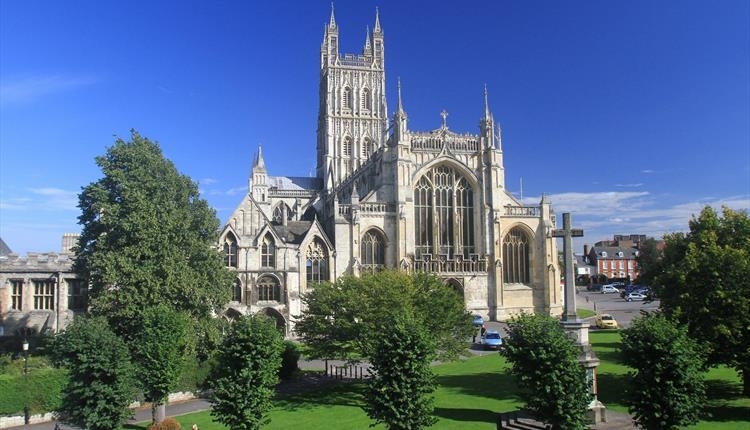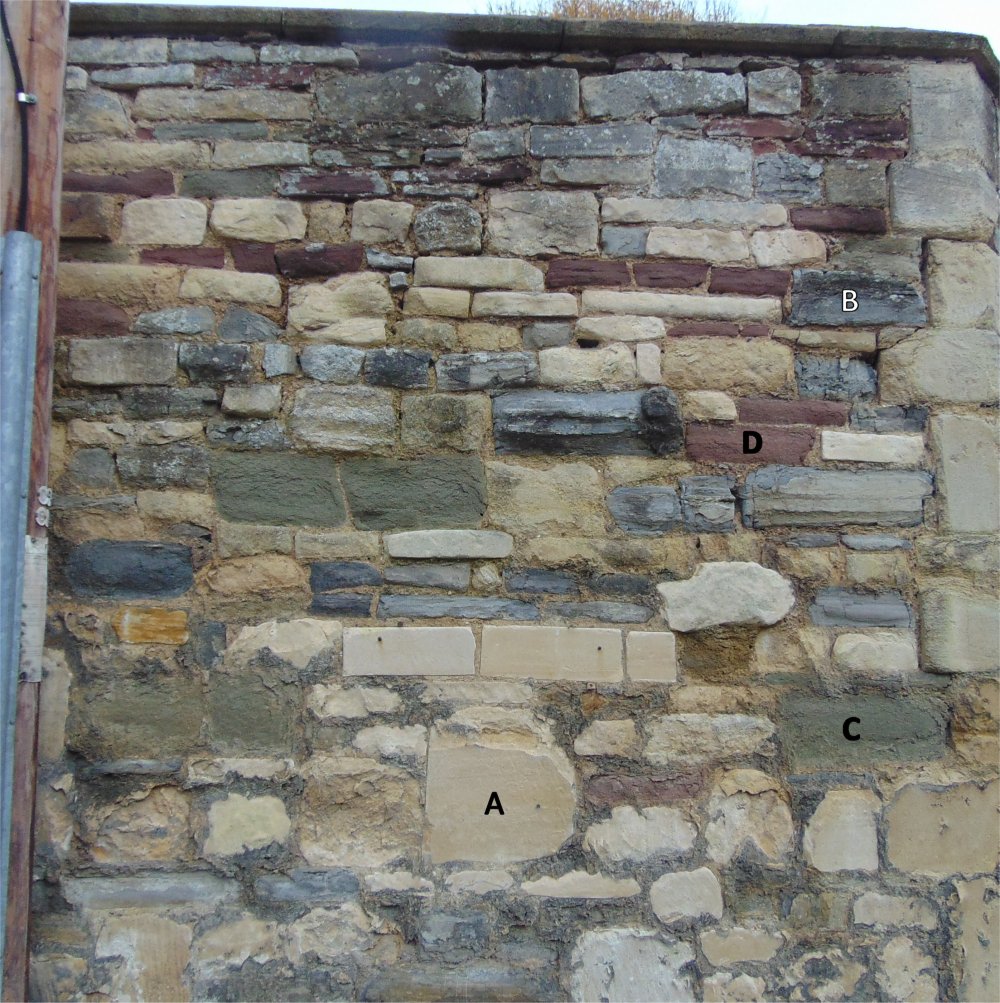
**************************************
Formerly St Peter's Abbey, founded by St Osric of Mercia in AD 676, it was raised to Cathedral status by Henry VIII at the time of the reformation when many such buildings were being savaged, which is rather ironic. The Cathedral was saved from the country-wide depredations because it houses the tomb of Edward II.
The current building dates from the time of William Rufus circa 1089 AD with numerous amendments and restructuring taking place around the original Norman build.
Wanting to make a dramatic mark on the landscape the masons sourced a really white oolitic limestone from nearby quarries in Painswick and Minchinhampton. Modern restorations are matched to this stone but the stones now come from France.
**************************************
The Stones
The oolitic limestone of the Cotswolds varies in colour from the white used for the cathedral, through yellows to almost brown (think - Cotswold cottages) Apart from the Painswick oolitic limestone there are various other types of limestone and sandstones around the cathedral in the less visible places.
Oolitic Limestones
The Cotswold hills are made of Oolitic limestone, a type of limestone made up of small round grains. These formed in shallow, warm waters where calcium carbonate is deposited from sea water due to evaporation. The round grains grow in size as they are gently rolled to and fro by waves, in water only a few metres deep so they form round granules like eggs or ooliths.This happened about 160-180 million years ago. The oolitic limestone used for the cathedral body and the yellow oolitic limestone used around and about are essentially the same but the whiter Painswick stone has less mineral impurities. All have fossils.
Blue-grey Lias Limestone from the Cotswolds.
This is commonly muddy and splits easily. Large fossil shells are visible. A blue-grey lime mudstone, it was used quite widely in older buildings which may have been rendered as the Lias generally weathers poorly when exposed. It is easily recognised by its pale blueish colour, thin tabular blocks and characteristic thin layers of coarse and fine material. It holds lots of fossils, mainly bivalves,and is about 200 million years old.
Red Devonian Old Red Sandstone or "Wilderness Sandstone" from the Forest of Dean.
Old Red Sandstone is a large group of rocks of late Silurian and Devonian age. They are formed from wind and weather grinding particles down in a semi-arid desert environment giving them their conspicuous red colouring through the intense weathering of iron-bearing minerals. It is 360 to 420 million years old. “The Wilderness” is an area in the Forest of Dean.
Green Silurian Sandstone from the Forest of Dean
Green Silurian sandstone is formed in a similar manner to Old Red Sandstone but is even older at 420 to 440 million years. Sandstones occur in many colours as well as the predominant red. It can be red, green purple or brown even within the same geological area.
Cotswold Ragstone
Ragstone is a very hard type of limestone widely used in the medieval period. It is very difficult to face-up or carve but very durable so often used for foundations. It forms from sediment build up in flowing water so often shows crossbedding and lots of shell fragments.
**************************************
In some places the stone has been affected by external forces such as wind/rain erosion and air pollution.
Natural stones exposed to the air, rain and snow as well as changes in temperature suffer changes and may start to disintegrate.
Freezing and thawing of water in cracks may wedge the stone apart. Minerals in the stone such as iron may oxidise and stain the stone.
These are natural but man-made pollutants from coal fires and traffic fumes also cause changes. Until about thirty years ago when it was extensively cleaned, the tower was black and clinker can still be seen stuck in corners of the parapet of the tower.These effects are the major reason for restoration . It is possible within a small area to see both these decayed stones and recent replacements.
**************************************
THE QUESTIONS. (anticlockwise around cathedral building.)
You will need to be able to refer to the photo in order to answer Q 4
Q1 SOUTH TRANSEPT (to right of main entrance in south porch)
The stone with arched tracery set below the window is very orangey. Where do you think this stone may have come from and why is it this colour?
For the outer walls of the surrounding buildings the builders would use whatever stone came to hand as in the wall for the picture question. In its heyday before the Reformation (circa 1540) the cathedral was surrounded by satellite services - masonry, milling, stables etc all with workshops to support the Abbey. Millers Green and the buildings "round the back" are remnants of these.

Photo of a wall in Miller's Green behind the cathedral.
Q2 MILLER’S GREEN
Looking at the picture given. What types of stone do you think are marked. A B C and D
The cache description above will help you
Q3 PARLIAMENT HOUSE( by the entrance to the café on the west end.)
The stones here are very discoloured and crumbling. Describe what you see and say what you think may have caused it.
Q4.The Stones
Why do you think that the stone for repairs is now being sourced from France now instead of accessing a local supply?
Q5. (proof of visit)
Look up from WP3. Describe the number and shape of the chimneys
Any photos of your visit would be welcome.
As this is an Earth Cache there is no physical container to find. Instead answer the questions and send them to me via email or message centre using the link on my user profile at the top of the page.
You may post a found log without receiving a response from me. Any found logs without a corresponding email or message will be deleted and any with significant errors will be contacted for further checks.